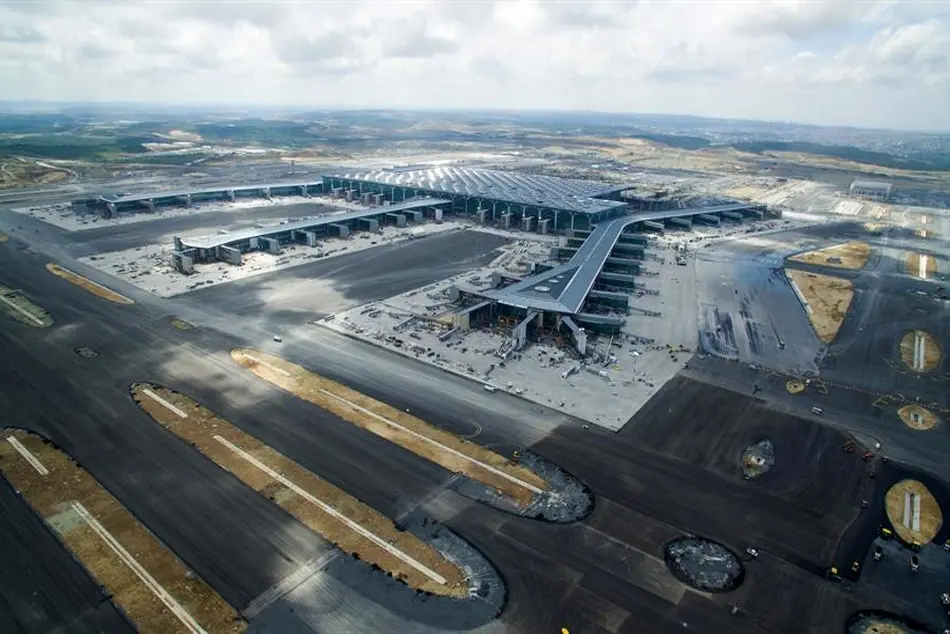Full operations begin at the new Istanbul airport
On April 6, the time has come: the new Istanbul airport will be fully operational after several delays and will take over all flights that were previously handled by the old Atatürk Airport. In ten years, it will become the largest airport in the world, if the goal of the new airport’s management becomes reality.

On April 6, the time has come: the new Istanbul airport will be fully operational after several delays and will take over all flights that were previously handled by the old Atatürk Airport. In ten years, it will become the largest airport in the world, if the goal of the new airport’s management becomes reality.
After four and a half years of construction work, the main terminal including the apron and two of the planned six runways are completed. The current capacity should be around 90 million passengers.
With more than 1.4 million square metres, the completed terminal is the second largest in the world under one roof, after Terminal 3 at Dubai International Airport.
Over the whole weekend, Turkish Airlines, as a future home carrier, is carrying out what it calls the “biggest move in the history of aviation”. Most of its fleet is currently flying over from Atatürk to the new airport, a flight of just under 40 kilometres.
The air traffic will be suspended for twelve hours due to the move at both airports: from Saturday morning at 01:00 CEST to Saturday noon at 13:00 CEST. Then, first among all airlines, the Turkish Airlines planes will take off from the new “Istanbul Airport”.
The new major airport on the northern edge of the Turkish metropolis is the first to have been built in Europe for almost 20 years.
Controversy arose from the working conditions on the large construction site: there should have been numerous deaths. According to a report in the Turkish newspaper Cumhuriyet, several hundred people have died since the work began, with the government conceding 27 deaths in February.
With a surface area of 76 square kilometres, the new airport will, in the long run, be three times the size of Atatürk Airport.
After completion of the last stage of construction in 2028, the number of passengers is expected to rise to 200 million. Then the airport will have a capacity of 500 aircraft and will be able to handle 2,000 takeoffs and landings daily. 250 airlines are scheduled to fly to more than 350 destinations around the world. The aim of the operators is to replace Atlanta Airport as the largest hub in the world.
The growth of air traffic in Istanbul is already changing the airport landscape in Europe. In 2015, Atatürk Airport overtook the Lufthansa hub in Frankfurt in terms of passenger numbers as the third-largest airport in Europe.
European airlines fear a diversion of passenger flows at their expense – especially in the direction of South East Asia and East Africa. From Istanbul, Turkish Airlines does not need long-haul aircraft to pick up passengers from most European airports, so travellers can easily continue their journey through the new hub.
In addition, Turkish is not subject to any restrictions affecting its landing rights in Europe, unlike Emirates or Etihad for example. But above all, Istanbul is geographically much cheaper than the airports on the Persian Gulf.
Turkish President Recep Tayyip Erdogan had already inaugurated the new airport last October. But Turkish Airlines refused at that time to relocate its operations completely, due to an insufficient completion of the works, and offered only a few connections.
Immediately after the departure of the last aircraft from Atatürk (TK54 to Singapore), the IATA code IST moves to the new airport, currently designated as ISL. Afterwards, Istanbul Atatürk will only handle freight and business travel and get the code is ISL.



